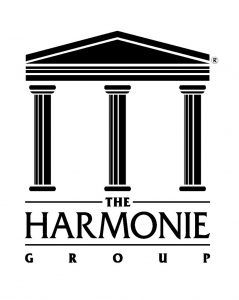Limelight Articles
Apportionment of claims under the Corporations Act 2001 (Cth)
Selig & Anor v Wealthsure [2015] HCA 18
Introduction
On 13 May 2015, the High Court of Australia handed down a decision with potentially wide-ranging ramifications for financial services providers and insurers. The Court unanimously allowed an appeal by Mr and Mrs Selig (the Seligs) against a majority judgment of the Full Court of the Federal Court of Australia and, in doing so, overturned the authority that the proportionate liability provisions in Corporations Act 2001 (Cth) (Corps Act) applicable to misleading and deceptive conduct are enlivened in respect of a claimant’s entire claim even though only one successful cause of action is for a breach of the misleading and deceptive conduct provisions.
Facts
The Seligs invested $450,000 in Neovest Limited (Neovest) on the advice of David Bertram (Bertram), who at the time was an Authorised Representative of Wealthsure Pty Ltd (Wealthsure). Wealthsure was the holder of an Australian Financial Services Licence.
The scheme proposed in the prospectus issued by Neovest was, in effect, a “Ponzi” scheme. Neovest then became insolvent and the Seligs lost their investment and suffered consequential losses.
In 2010, the Seligs commenced proceedings in the Federal Court of Australia against Wealthsure, Bertram, Neovest, the directors of Neovest and others. The causes of action were as follows:
- misleading and deceptive conduct in contravention of sections 1041E and 1041H of the Corps Act and section 12DA of the Australian Securities and Investments Commission Act 2001 (Cth) (ASIC Act).
- breach of the implied warranty pursuant to section 12ED of the ASIC Act;
- negligence; and
- breach of contract.
Wealthsure and Bertram denied the allegations and also pleaded, in the alternative, a proportionate liability defence naming the directors of Neovest, Neovest and Norton Capital Pty Ltd (Norton) as concurrent wrongdoers.
Proportionate liability regime of the Corps Act
Section 1041L of the Corps Act provides that:
- the proportionate liability regime under the Corps Act applies to a claim for damages made under section 1041I caused by misleading and deceptive conduct in contravention of section 1041H (apportionable claim); and
- there is a single apportionable claim in proceedings in respect of the same loss or damage, even if the claim for the loss or damage is based on more than one cause of action (whether or not of the same or a different kind).
Section 1041N of the Corps Act relevantly provides that:
- in any proceedings involving an apportionable claim, the liability of a defendant who is a concurrent wrongdoer is to be apportioned; and
- if the proceedings involve both an apportionable claim and a claim that is not an apportionable claim:
- liability for the apportionable claim is to be determined in accordance with the proportionate liability provisions of the Corps Act; and
- liability for the other claim is to be determined in accordance with the legal rules, if any, that are relevant.
First instance
At first instance, Lander J entered judgment in the Seligs favour against Wealthsure, Bertram and two others.
His Honour held that the proportionate liability provisions of the Corps Act applied to the causes of action for contravention of section 1041H only, and not to those causes of action that did not rely on section 1041H ,despite accepting that the losses arising from all causes of action were the same.
Wealthsure and Bertram appealed, relevantly as to the applicability of the proportionate liability provisions under the Corps Act.
Appeal – Full Court of the Federal Court
In a joint judgment on this issue, Mansfield and Besanko JJ (White J dissenting) allowed the appeal.
Their Honours concluded that a proper construction of the Corps Act proportionate liability provisions means that there is a single apportionable claim in respect of the same loss of damage even if the claim for the loss or damage is based on more than one cause of action, some of which are not themselves apportionable claims.
The Seligs appealed.
The High Court
In a unanimous decision, French CJ, Kiefel, Bell, Gageler and Keane JJ allowed the appeal.
The High Court concluded that the proportionate liability provisions of the Corps Act applied only in respect of misleading and deceptive conduct in contravention of section 1041H. The Court’s reasoning was, in essence, that the definition of “apportionable claim” for the purposes of the proportionate liability provisions of the Corps Act, and the corresponding provisions of the ASIC Act, was such that apportionment was only available where the relevant causes of action available to a claimant against a defendant and any concurrent wrongdoers were all in respect of misleading and deceptive conduct in contravention of section 1041H. It does not encompass claims based upon conduct of a different kind, whether statutory or at common law.
The High Court also held that section 1041I(1B) of the Corps Act, which provides for the reduction of an award for damages by reason of contributory negligence of a claimant, similarly applies only to reduce any damages awarded for misleading and deceptive conduct in contravention of section 1041H.
As such, the Seligs were permitted recover all their losses in respect of their non-apportionable claims.
Non-party Costs Order
In a joint judgment, French CJ, Kiefel, Bell and Keane JJ (Gageler J concurring in a separate judgment) made a non-party costs order against the professional indemnity insurer of Wealthsure (the insurer).
The High Court held that:
- Wealthsure’s ability to meet any judgment sum was uncertain and Bertram was bankrupt;
- the insurer had conduct of the defence of the proceedings;
- the professional indemnity policy issued by the insurer to Wealthsure provided cover for any one claim inclusive of costs and expenses;
- due to the legal costs incurred in the proceedings, it was anticipated that there would be a significant shortfall in the amount that the Seligs would be able to recover from Wealthsure and Bertram; and
- at the time that the decision to appeal was made, the insurer was acting for itself in seeking to better its position and it was obvious that incurring further legal costs would reduce the amount available to meet the extant order for costs in the Seligs favour and any future order made on the appeal.
The Court noted that the insurer had been entitled to so act, but that, in doing so, it should also be prepared to bear the consequences if unsuccessful.
Potential ramifications
A defendant’s ability to take advantage of the proportionate liability provisions of the Corps Act is now limited only to where the relevant conduct of the concurrent wrongdoer(s) is also misleading and deceptive conduct in contravention of section 1041H. A contributory negligence reduction under 1041I(1B) the Corps Act only operates in respect of misleading and deceptive conduct under the Act.
In respect of the non-party costs order, the Court gave no guidance as what portion of the policy limit needed to have first been eroded on defence costs before it would be appropriate to make such an order. As such, where a policy limit is inclusive of defence costs and where there is uncertainty as to the claimant’s ability to recover from the insured over and above the policy limit, an insurer involved in expensive and/or appellate litigation, particularly where there is no top-up or excess layer insurance, must take care when making decisions relating to the conduct of the litigation and the incurring of defence costs.
Similarly, an insurer in such circumstances should also be aware that its policy limit may not be its limit of its exposure.
Date: 14 May 2015









